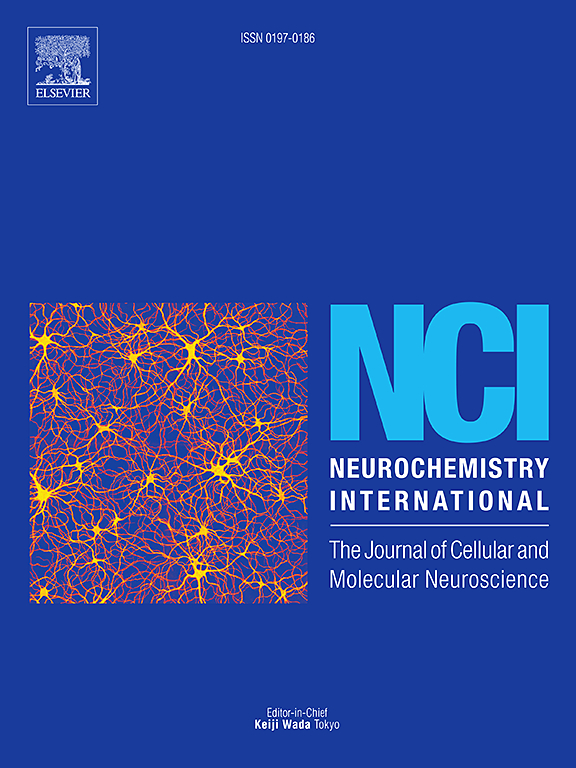Truncation mutation of CHMP2B disrupts late endosome function but reduces TDP-43 aggregation through HSP70 upregulation
IF 4
3区 医学
Q2 BIOCHEMISTRY & MOLECULAR BIOLOGY
引用次数: 0
Abstract
TAR DNA-binding protein 43 (TDP-43)-positive cytoplasmic aggregation is a pathological hallmark of amyotrophic lateral sclerosis (ALS) and frontotemporal lobar degeneration (FTLD). This aggregation contributes substantially to the neurodegeneration of ALS and FTLD. The endosome, a key component of membrane trafficking in eukaryotic cells and is involved in the autophagy–lysosome pathway. Endosome-related genes such as CHMP2B, Alsin, and TMEM106B, are either causative or act as genetic modifiers in ALS and FTLD. However, the association between endosomal functions and TDP-43 aggregations remain poorly understood. The C-terminal truncation mutation CHMP2B, which causes frontotemporal dementia associated with chromosome 3 (FTD3), disrupts late endosome (LE)–lysosomes fusion. Nevertheless, FTD3 does not induce TDP-43 pathology. In this study, we showed that CHMP2B mutation-induced LE dysfunction promotes TDP-43 aggregate degradation through enhanced recruitment to juxtanuclear quality control compartments. Transcriptomic analysis revealed that CHMP2Bintron5 overexpression upregulates HSP70 expression. New insights into the connection between CMHP2B and HSP70 as well as the role of HSP70-mediated membrane trafficking in TDP-43 aggregation, offer a valuable understanding of the disease mechanism of ALS and FTLD.
CHMP2B的截断突变破坏了内核体的晚期功能,但通过HSP70的上调减少了TDP-43的聚集
TAR dna结合蛋白43 (TDP-43)阳性的细胞质聚集是肌萎缩性侧索硬化症(ALS)和额颞叶变性(FTLD)的病理标志。这种聚集在很大程度上导致了ALS和FTLD的神经退行性变。核内体是真核细胞中膜运输的关键组成部分,参与自噬-溶酶体途径。内核体相关基因,如CHMP2B、Alsin和TMEM106B,在ALS和FTLD中要么是致病基因,要么是基因修饰因子。然而,内体功能和TDP-43聚集之间的关系仍然知之甚少。c端截断突变CHMP2B可导致与3号染色体(FTD3)相关的额颞叶痴呆,破坏晚期内核体(LE) -溶酶体融合。然而,FTD3不诱导TDP-43病理。在这项研究中,我们发现CHMP2B突变诱导的LE功能障碍通过增加向核旁质控室的招募来促进TDP-43聚集体降解。转录组学分析显示,CHMP2Bintron5过表达可上调HSP70的表达。对CMHP2B和HSP70之间的联系以及HSP70介导的膜转运在TDP-43聚集中的作用的新见解,为ALS和FTLD的疾病机制提供了有价值的理解。
本文章由计算机程序翻译,如有差异,请以英文原文为准。
求助全文
约1分钟内获得全文
求助全文
来源期刊

Neurochemistry international
医学-神经科学
CiteScore
8.40
自引率
2.40%
发文量
128
审稿时长
37 days
期刊介绍:
Neurochemistry International is devoted to the rapid publication of outstanding original articles and timely reviews in neurochemistry. Manuscripts on a broad range of topics will be considered, including molecular and cellular neurochemistry, neuropharmacology and genetic aspects of CNS function, neuroimmunology, metabolism as well as the neurochemistry of neurological and psychiatric disorders of the CNS.
 求助内容:
求助内容: 应助结果提醒方式:
应助结果提醒方式:


